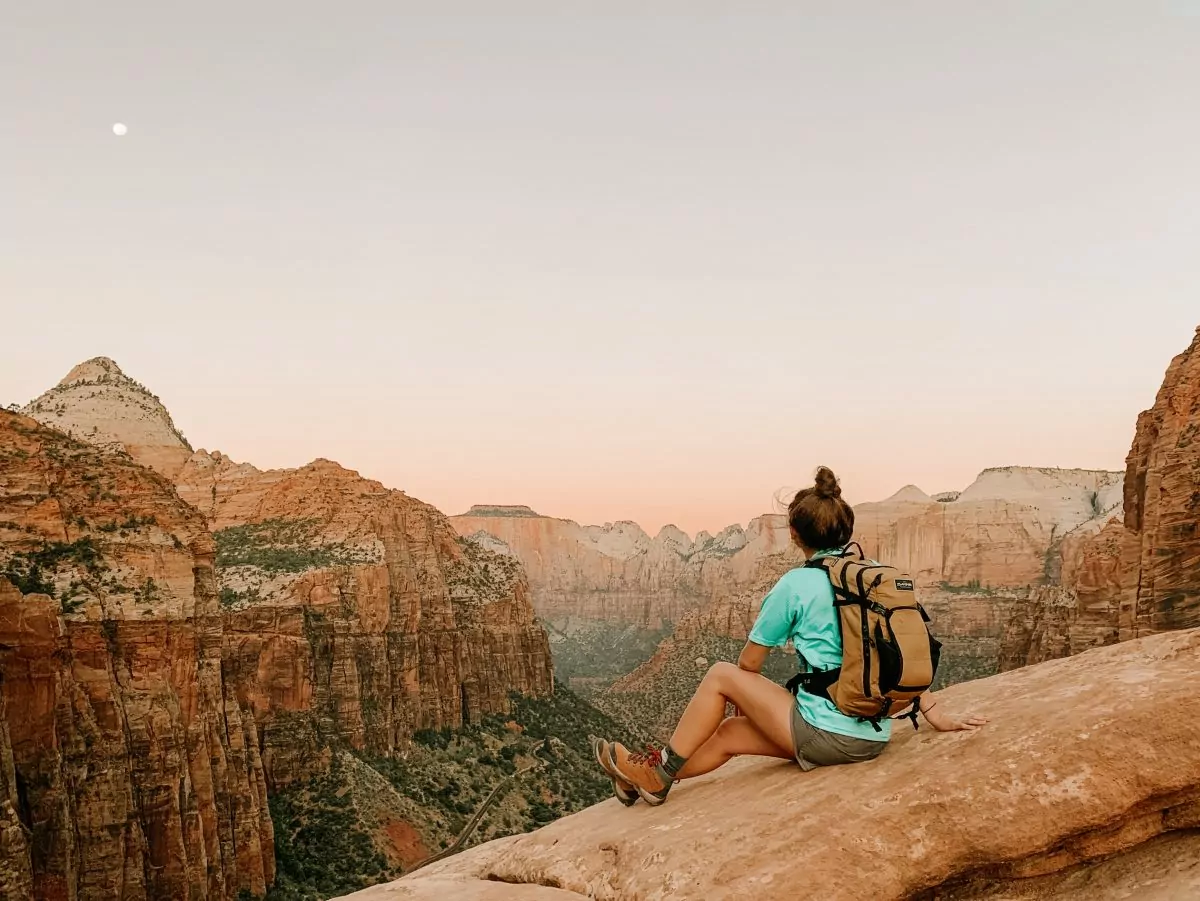
Photograph by Katie Polansky on Unsplash
Many new hikers surprise what to put on mountaineering — and it may be a complicated matter. I’ve spent years fine-tuning my layering system for mountaineering. After making about each mistake there’s to make, I’ve loads of information to share from firsthand expertise. Some gnarly sunburns taught me that masking your physique in sun-protective clothes even when it’s sizzling does work. A number of nights spent shivering in my automotive on my post-hike drive residence helped me study that additional layers are properly value their weight. It takes a little bit of trial and error to search out the proper layering system for you, however hopefully, we will clear up some confusion and assist get you began. This information lays out what to put on mountaineering for learners: from what it’s best to search for when shopping for gear to when to put on every merchandise.
All Inclusive Mountain climbing Adventures
Price range Buying Issues
In case you’re on the lookout for clothes at brand-name field shops like REI, you may simply spend $500 or extra on a primary clothes system. Nonetheless, there are additionally cheaper methods to outfit your self. Whereas clothes from retailers like Goal or Amazon could not final as lengthy or carry out as properly, they’re typically less expensive. So, large retailers are nice locations to look for those who’re on a price range. Even higher, you’ll find high-quality outside clothes for very low-cost at secondhand gear shops, consignment outlets, and thru on-line resellers.
While you’re shopping for mountaineering garments, I like to recommend selecting a few objects to splurge on (one prime and one backside) whereas saving on the remaining. For instance, for a winter day hike, you might pair high quality merino wool base layers with a hoodie you have already got and an inexpensive down jacket. Then, when you resolve you need to set out on longer hikes into extra distant terrain, you may step by step begin to buy extra gear. You don’t want each single piece of mountaineering gear to get began; whether or not you purchase new mountaineering clothes or seize some from the closet, we hope to see you out on the path!
Selecting the Proper Clothes for Your On a regular basis Adventures
You’ll need to take into account a number of elements when selecting your mountaineering clothes. For instance, it’s best to strike the stability between having sufficient safety from solar or different climate whereas nonetheless having room to maneuver and breathe. Right here’s a common information for layering methods, however take into accout: mountaineering clothes is private and what works for me could not give you the results you want.
Mountain climbing Tops and Layers
Mountain climbing Shirts
You generate the vast majority of your physique warmth in your core. Whereas it might be tempting to throw on no matter cotton T-shirt you have got available, you’ll be considerably extra comfy sporting a shirt made particularly for all-day exercise. Out of doors gear shops like REI have loads of choices for each brief and long-sleeved sun-protective and moisture-wicking shirts. Nonetheless, second-hand shops and field shops like Goal even have lively clothes. Search for a mix of polyester, nylon, and spandex supplies. Bonus factors go to shirts with an ultraviolet safety issue (UPF) score, particularly for summer time adventures or hikes on snow. In case you don’t prefer to hike in a long-sleeve solar shirt, be sure that to use (and reapply) sunscreen to guard your pores and skin throughout your hike.
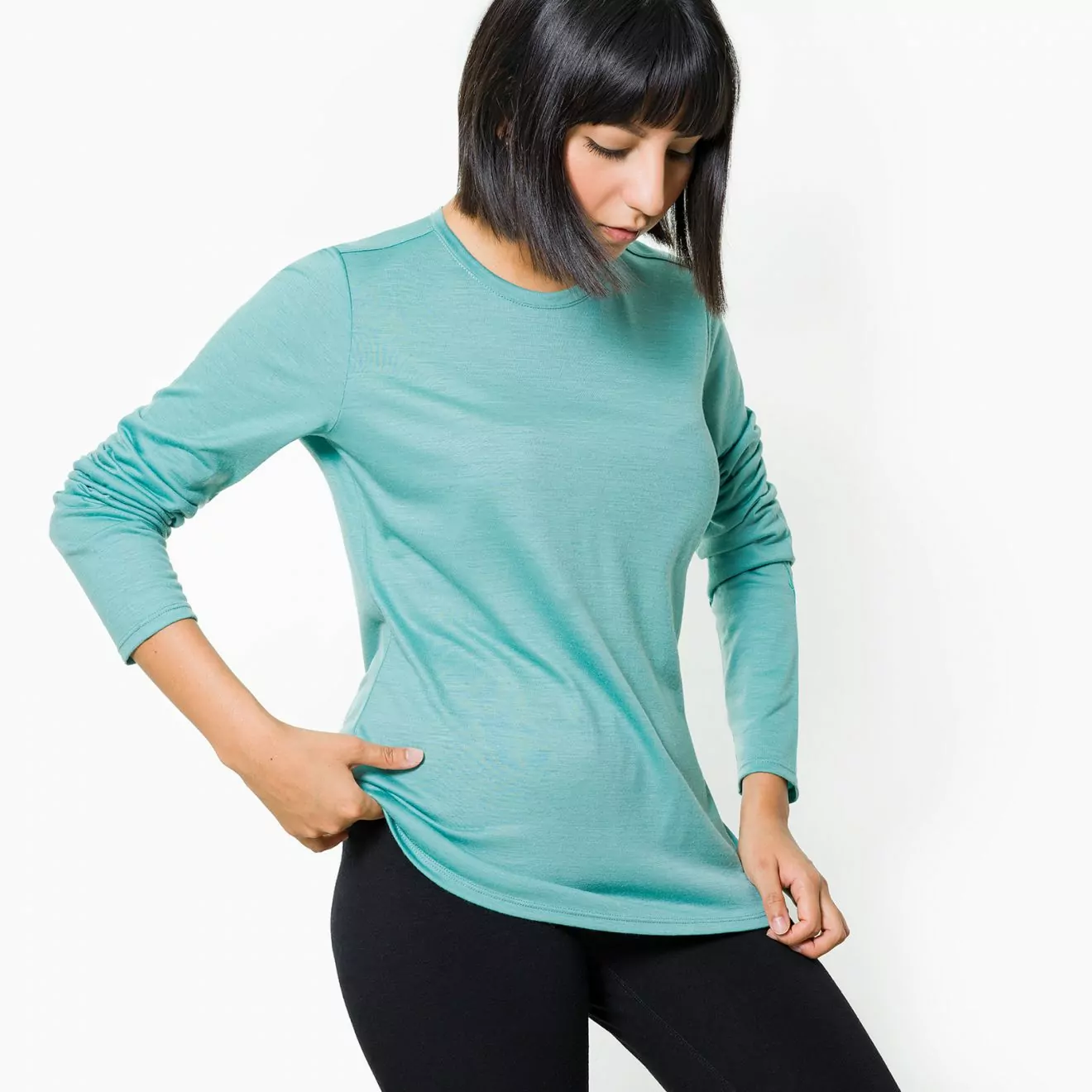 BaseLayers
BaseLayers

At any time when it’s chilly sufficient to layer up, a top quality base layer is essential. Baselayers (also referred to as lengthy underwear) lure in physique warmth, whereas wicking sweat away out of your physique. Merino wool base layers are very fashionable as a result of they handle moisture extraordinarily properly and in addition preserve you heat. Nonetheless, wool blends or artificial base layers are a extra inexpensive possibility. The most effective supplies to search for listed here are polyester and nylon, and be certain the outline mentions moisture-wicking properties within the supplies.
Fleece Midlayers
Midlayers retain warmth so you may keep cozy. Sometimes, I put my mid-layer on whereas I’m having fun with a summit or heading again down the path. I strive to not sweat in my mid-layer, so I don’t often put on it after I’m working laborious on the uphill part of the hike. New, brand-name mid layers may be expensive, however you may completely use one thing you have already got round your own home. A fleece-lined hoodie or fleece zip-up jacket are my two go-to’s.
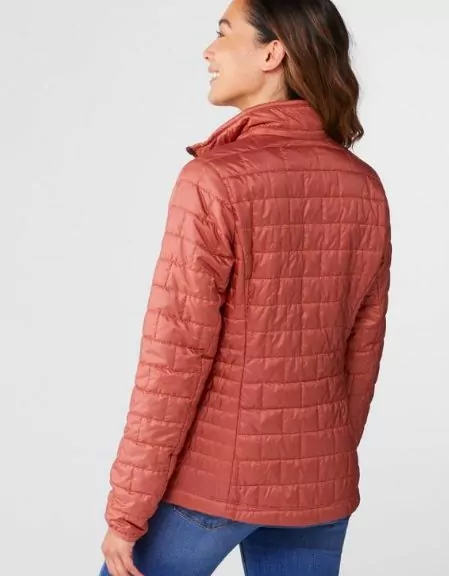 insulated “Puffy” MidLayer
insulated “Puffy” MidLayer

This mid-layer is essential for conserving physique warmth when the temperature drops. A puffy jacket is often stuffed with both down or artificial insulation, each of which have professionals and cons. Down fill is hotter and lighter, but costlier. Then again, artificial insulation isn’t fairly as highly effective on the heat to weight scale, but it’s often extra inexpensive and performs higher when moist. A top-of-the-line insulated jacket can price upwards of $300 and is nice for ultralight backpackers who lament over each ounce. Nonetheless, you may also discover cheaper choices on Amazon and even at bigger shops like Outdated Navy.
Shell/Rain Jacket
You should utilize a pleasant hardshell jacket as each a rain layer and a windbreaker/outer layer. The perfect weight and supplies for this layer are depending on the way you count on to make use of it. In case you’re on the lookout for one thing that provides most safety from rain and snow, search for a jacket with three layer Gore-tex material. Then again, many manufacturers have cheaper and lighter alternate options utilizing their very own waterproofing expertise. Sometimes, these received’t preserve you as dry however could also be lighter and extra breathable. In case you’re backpacking in a dry local weather, you might want much less safety than for those who’re happening a multi-day tour in Washington within the spring. I completely splurged on my shell jacket, and I don’t remorse it. I’ve the Arc’teryx Beta LT with Gore-Tex and I take advantage of it for every thing from backpacking to backcountry snowboarding.
Mountain climbing Pants and Shorts
Pants
Pants don’t need to be sizzling and uncomfortable. Many high quality mountaineering pants are literally designed for all-season use – they preserve you cool in the summertime and maintain in heat in colder climate, as properly. Crucial factor is to search out pants that suit you properly; strive them on and ensure you’ll be capable to transfer with out restriction. I favor pants with a flared leg, so I can roll them up into capris for extra air flow. Nonetheless, you may also select mountaineering pants (like joggers) that suit your private model so you need to use them for on a regular basis use. In case you don’t need to purchase new, you’re more likely to discover many pant choices at an outdoors-focused consignment retailer.
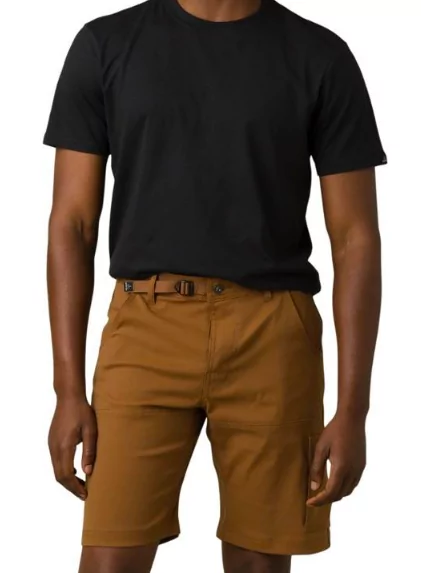 Shorts
Shorts

If you’re a shorts individual, I extremely advocate investing in an extended pair designated for mountaineering. The entire 3” inseam shorts that I put on for working don’t lower it on longer hikes as a result of I’m uncovered to the solar for longer and more likely to chafe. Search for a 5” or 7” inseam possibility to guard your inside thighs. You’ll additionally need to search for nylon or polyester supplies, and deep pockets. Pockets are nice as a result of you may have easy accessibility to chapstick, sunscreen, snacks, and your telephone with out digging in your pack.
Leggings
Sometimes, pants are a greater possibility for mountaineering than leggings as a result of they’re extra sturdy, breathable, and protecting. Nonetheless, a pair of good leggings can present additional consolation and heat, particularly in colder temps. Search for polyester and spandex supplies in leggings. Polyester naturally repels water and performs properly outside, whereas spandex provides stretch and luxury to the pants.
Baselayer Tights
Hikers use baselayer pants (typically known as lengthy johns) both beneath pants for additional heat or (in the event that they’re thicker) on their very own. Baselayer pants are sometimes made with the identical supplies as base layer tops, offering distinctive heat and moisture-wicking properties. Merino wool or wool mix layers are nice – I like their odor resistance particularly for backpacking. Nonetheless, for those who don’t have $50-$100 to speculate on this layer, you may also use leggings beneath pants for additional heat. You can too discover budget-friendly alternate options. On the John Muir Path, I slept in a pair of baselayer pants from Costco, they usually labored simply high quality.
Mountain climbing underwear, Sports activities Bras, and Socks
If there’s one piece on this listing that I might put money into, it’s the socks. High quality socks forestall blisters, sweating, and common discomfort in your toes whereas mountaineering. Search for merino wool or wool mix socks; Smartwool and Darn Robust are two in style decisions. For sports activities bras, I often use one thing low affect and breathable. Typically, you don’t have to purchase a hiking-specific sports activities bra. I do have a Patagonia bra that I like, however for years beforehand I used a $15 Goal bra made out of polyester and spandex. When choosing underwear, search for these identical supplies and something labeled as quick-drying/moisture-wicking.
Mountain climbing Footwear
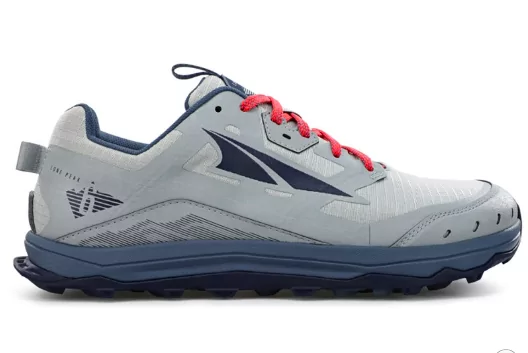 path runners
path runners

Many hikers favor path trainers (or low-top mountaineering footwear) over conventional mountaineering boots. They’re a lot lighter, which makes you extra agile and speedy. One other professional of path runners is that they don’t require a break-in interval as a result of they’re comfy proper out of the field. Nonetheless, whereas path trainers are nice for hikers who need additional velocity and agility in difficult terrain, they don’t final so long as mountaineering boots, particularly for those who’re backpacking with a heavier load.
mountaineering boots
Mountain climbing boots are higher for hikers preferring a extra conventional shoe that can final without end. Nonetheless, most boots require a prolonged break-in interval. It is best to put on them for a lot of brief walks or day hikes earlier than taking them in your first backpacking journey. This can assist reduce your likelihood of sizzling spots or blisters. Boots additionally supply extra assist and stability whenever you’re carrying a heavy pack, and can preserve your toes protected and completely satisfied throughout lengthy days on the path.
Sandals
You’ve seemingly seen somebody mountaineering or working in a pair of sandals earlier than. I don’t advocate this for everybody, however there are individuals who swear by this minimalist footwear. Sandals like Chacos or Tevas are nice to convey as camp footwear on backpacking journeys or lengthy day-hikes, particularly if there’s water concerned. If it’s worthwhile to cross a creek, you may shield your toes whereas conserving your primary mountaineering footwear dry. Plus, carrying mountaineering sandals provides you the choice to modify up your footwear in case your footwear are bothering you. Professional tip: all the time put on socks whenever you’re mountaineering in sandals (apart from creek crossings). This can preserve sweaty toes from slipping round.
Mountain climbing Equipment
Gloves
For mountaineering in cooler climate, a pair of light-weight and breathable gloves will preserve your fingers toasty. A mix of polyester and nylon is a little more breathable, whereas wool or merino wool gloves are hotter. In case your fingers run excessively chilly, take into account mittens. Preserving your fingers collectively generates extra heat contained in the mitten.
Solar hats
I by no means hit the path in the summertime and not using a hat. It supplies additional shade and safety over your face and may preserve extreme quantities of sweat from getting in your eyes. There are two primary sorts: baseball-style ball caps and full brim hats. Full brim hats are finest utilized in extraordinarily sunny locations just like the Southern California desert, the place you need neck safety as properly. For many adventures, I seize a light-weight cap with breathable mesh and a UPF score of fifty.
Chilly Climate Headwear
Preserving your head and ears heat is essential through the winter. For top-output actions like a strenuous hike, I’m cozy sporting a fleece-lined headband round my ears. Nonetheless, for many colder hikes I all the time convey a beanie simply in case. Excessive-quality and light-weight beanies are nice for managing warmth and sweat, however a easy wool or polyester beanie will work as properly.
Neck Gaiters/Buffs
These are useful for each the summer time and winter. Summer season buffs have UV safety and are very light-weight and breathable. They shield your neck from solar publicity and absorb extra sweat in that space. Then again, wool or fleece-lined buffs assist lure that essential warmth in your neck through the winter.
Ankle Gaiters
Hikers use gaiters in each dry, sizzling deserts and for mountaineering by means of snow. Summer season gaiters are designed to maintain mud, rocks, and particles out of your footwear and socks. They’re low-profile, stretchy, and moisture-wicking. Whereas some hikers favor to put on gaiter within the summers, others don’t. Winter gaiters are extra of a necessity – they preserve your toes, ankles, and low legs dry whereas mountaineering by means of snow. They sometimes have a better rise and are made with tremendous waterproof Gore-Tex.
Nationwide Park Tenting Excursions
Seasonal Issues: Methods to Construct a Layering System
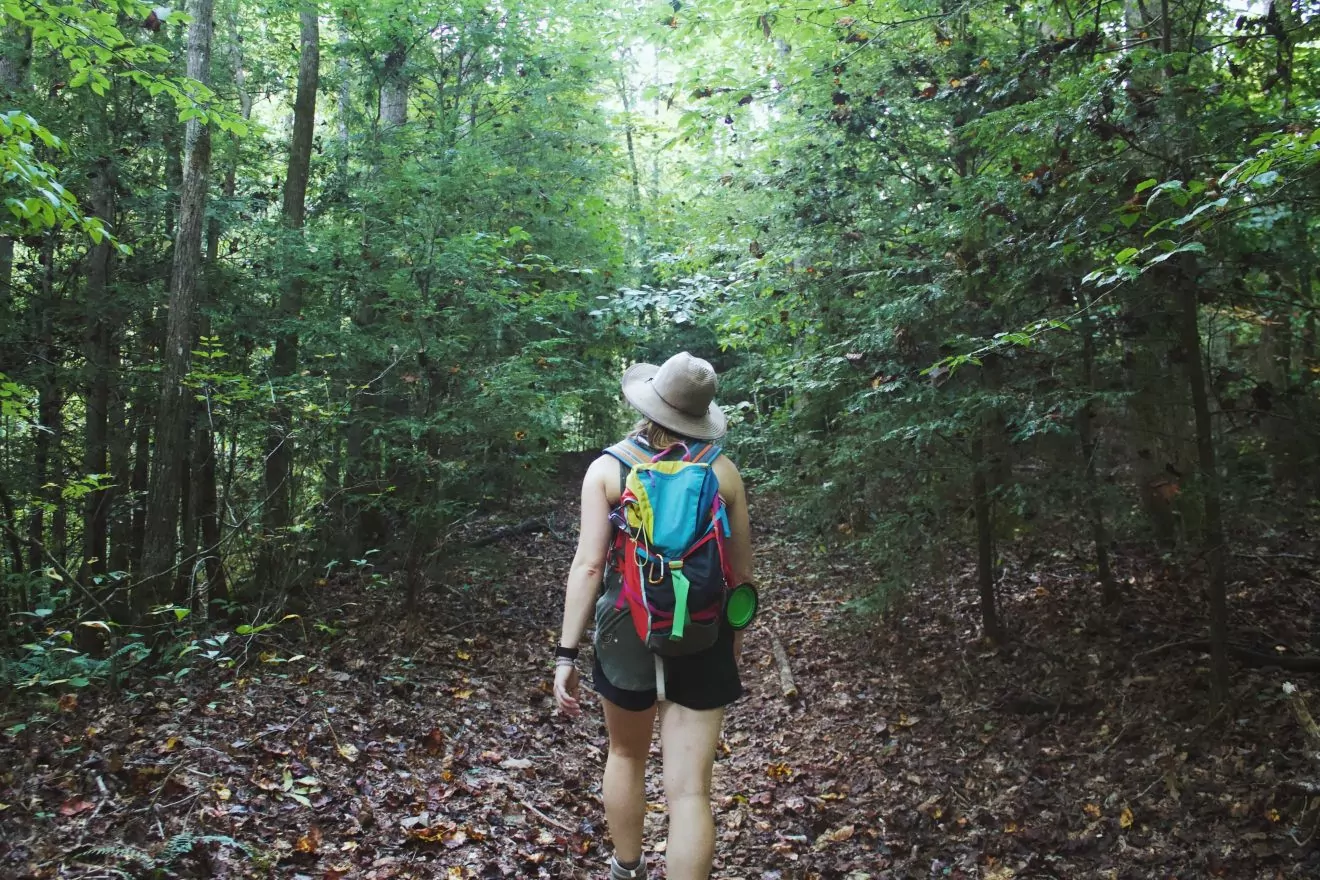
Photograph by Elise Zimmerman on Unsplash
Relying on the season, it’s best to tailor your mountaineering outfit to suit the temperatures and climate circumstances. Each individual is totally different, so preserve that in thoughts as you employ this tough information on how to decide on layers based mostly on the season. There is no such thing as a “excellent outfit” for mountaineering, and we’re all nonetheless working to fine-tune our clothes methods.
Summer season: ~60 levels – 100 levels Fahrenheit
- Shirt: In excessive warmth and solar, I favor a long-sleeved solar hoodie or button-down shirt with UPF safety over brief sleeves. This retains my arms protected so I don’t want to fret about reapplying sunscreen. Moreover, a light-weight solar hoodie with a polyester/spandex mix is definitely extra comfy (and safer) than the sensation of the solar instantly on pores and skin.
- Light-weight pants or shorts: Whether or not you select pants or shorts, you’ll need them to be skinny, moisture-wicking, and breathable. A pair of light-weight mountaineering pants works higher than leggings on this situation.
- Equipment: Solar protecting hat, skinny or blister-prevention socks, light-weight neck buff.
- Further layer: I all the time carry an additional light-weight shell, even in the summertime. This makes windy summits or lengthy descents rather more comfy, particularly if I’ve been working up a sweat.
Fall/Spring: ~40 levels – 60 levels Fahrenheit
- Shirt: In fall climate, you might go for both a long-sleeved mountaineering shirt, or a moisture-wicking t-shirt to put on as a base. Particularly whenever you’re layering up, you want your backside layer to deal with sweat extraordinarily properly. Personally, I like utilizing a working t-shirt as a base beneath my light-weight puffy jacket.
- Insulated layer: An insulated layer, like a midweight or puffy, will maximize physique warmth retention in the beginning of the hike and on the descent, whenever you aren’t working as laborious. I prefer to preserve my puffy in an out of doors or water bottle pocket of my pack, so I can take it on and off as wanted. Even for those who don’t assume it’s too chilly, this layer goes an extremely great distance within the case of temperature swings, sudden wind, or dusk.
- Pants or leggings: Select these relying on no matter you’re extra comfy in, what the temperature requires, and what you have got available. Leggings will preserve you hotter, whereas pants can be rather more breathable and deal with sweat higher.
- Equipment: Light-weight gloves, fleece-lined headband, hat, light-weight neck buff. These equipment will change relying on what temperature it’s.
- Shell: I’ll convey a shell along with my puffy jacket if there’s any likelihood of rain, wind, or broad temperature swings. It’s additionally nice to have the choice to put on a shell as an outer layer as a substitute of a heavier jacket.
Winter: ~20 levels – 40 levels Fahrenheit
Winter mountaineering comes with its personal set of concerns for each security and luxury — right here’s how you can tailor your mountaineering garments for the climate:
- Base layers: Winter is whenever you completely want high quality base layers. These concurrently preserve you heat whereas transferring sweat away out of your physique as you begin to warmth up. I like to begin winter hikes with a base layer and shell layer, after which add or take away layers as wanted.
- Pants: I’ve a number of methods for conserving my legs heat and layered within the winter. I’ll both do a pair of skinny base layers or leggings beneath mountaineering pants, or thicker base layers on their very own beneath a pair of shorts to maintain them from slipping. That is additionally the place softshell or insulated pants may be helpful.
- Softshell Pants: Softshell pants are thicker, extra sturdy, hotter, and waterproof pants which can be nice for winter mountaineering. They’re additionally a fantastic addition for mountaineering in variable climate circumstances or moist circumstances. These pants could have “softshell” of their title, and are sometimes made with polyester, nylon, and spandex.
- Midlayer: I have a tendency to save lots of this layer in my pack, particularly on ascents, so it stays dry and sweat-free. Then, on chilly summits or descents, it retains me cozy after I’m not working fairly as laborious.
- Insulated layer: This layer is completely important for retaining physique warmth within the winter.
- Equipment: Midweight gloves or mittens, fleece-lined beanie, wool neck buff, thick wool socks with an additional pair. If there’s any snow on the bottom, shoe gaiters and microspikes are essential.
- Shell: Once more, this can be a nice outer layer choice to have when a puffy is just too heat or if there’s any precipitation. Shells additionally do an unbelievable job of blocking wind in additional uncovered sections.
Simply Get Out There!
Your mountaineering clothes (or lack thereof) shouldn’t cease you from getting outside and having fun with nature. In case you don’t have the correct gear to sort out windy, wet circumstances, begin out mountaineering in honest climate till you may construct up your mountaineering closet. In case you’re like extra ideas for dressing for mountaineering, be part of a guided backpacking journey and study the ins and outs from one in every of our professional guides!
hike with us!
